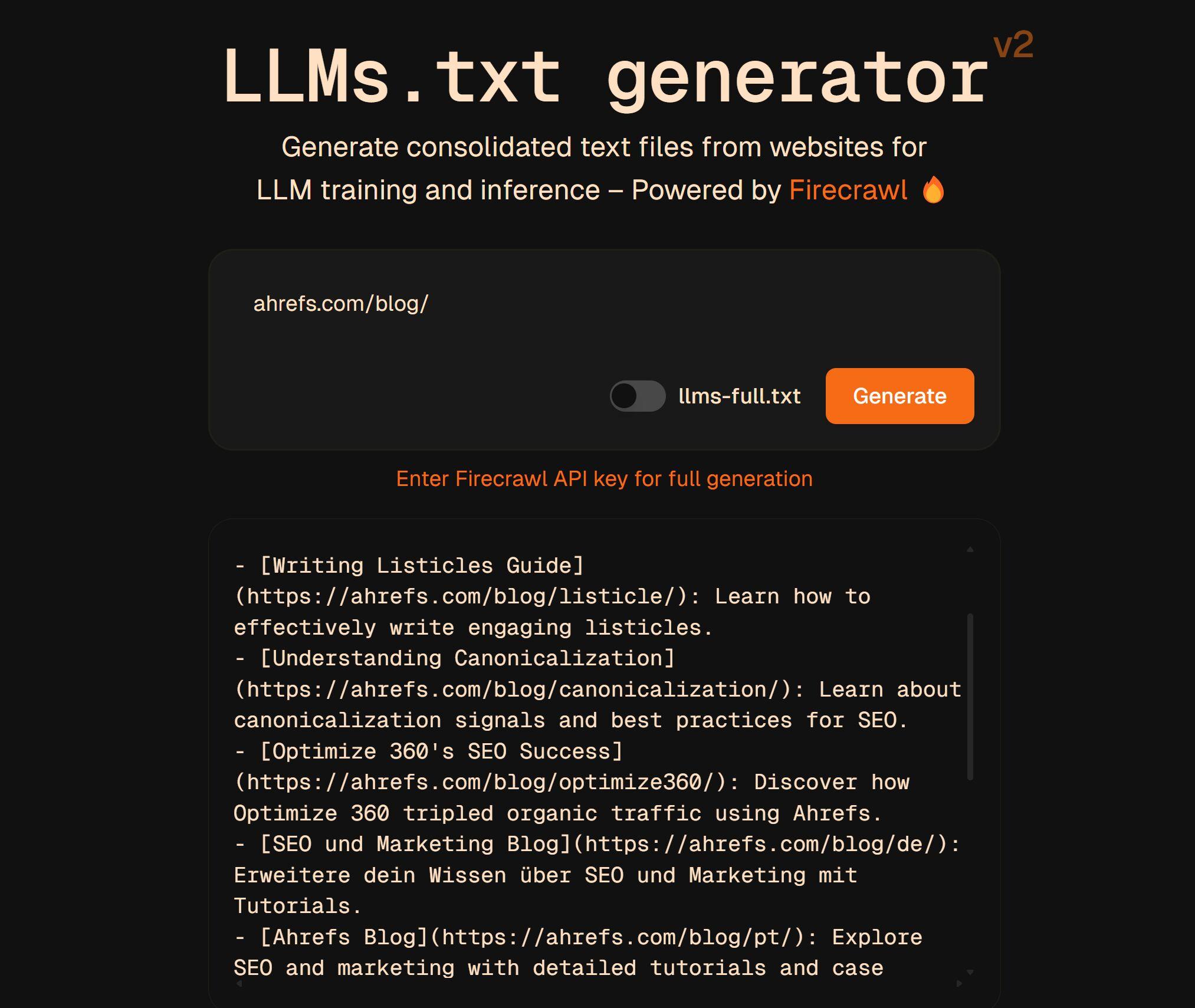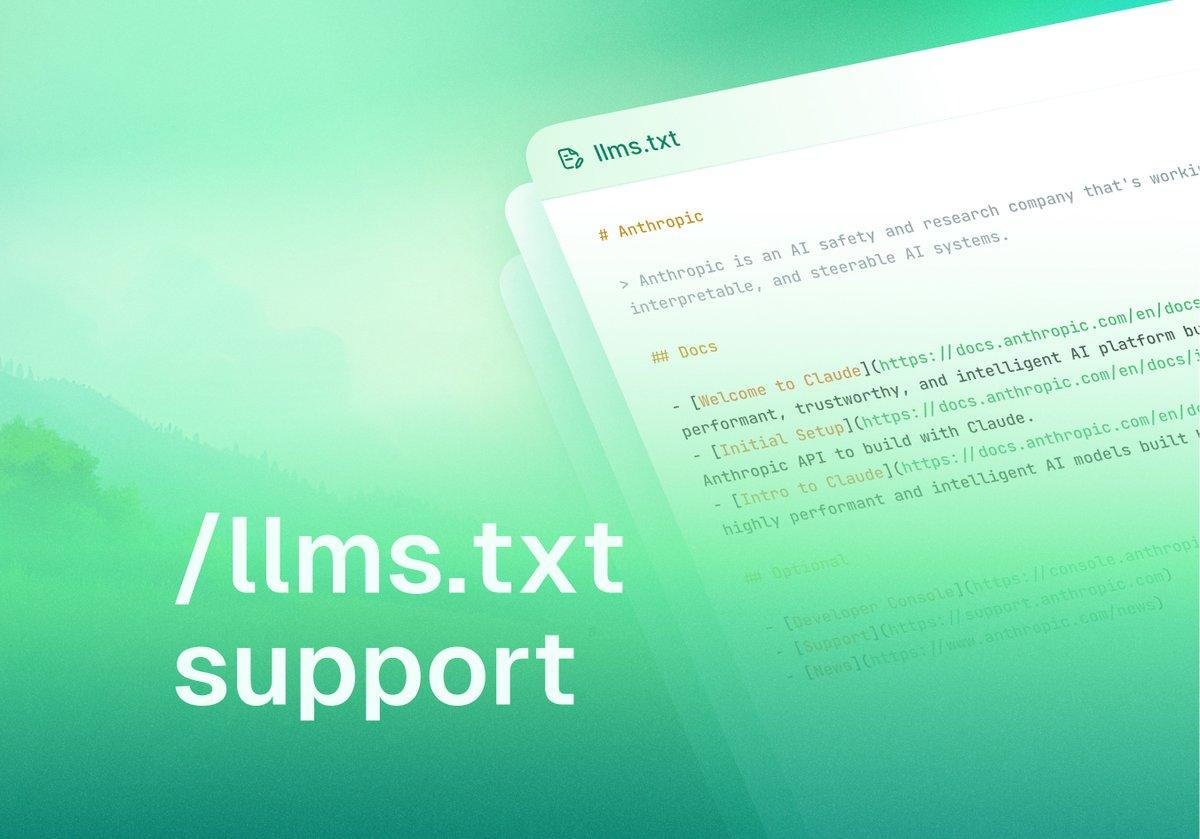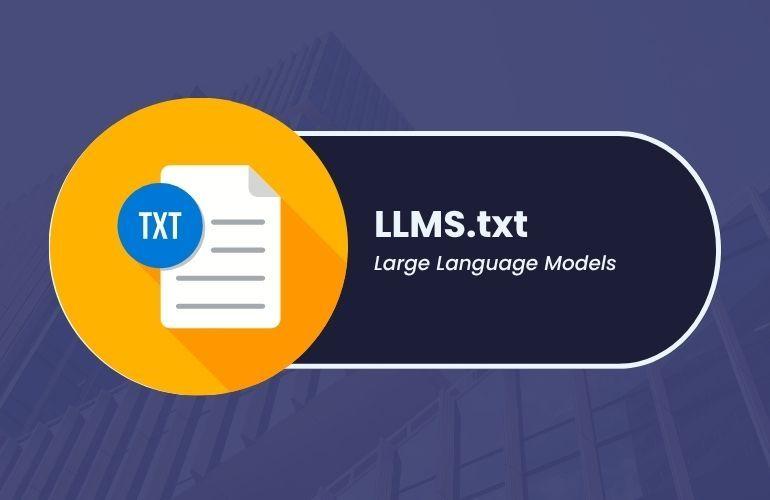Curious about llms.txt and how it can boost your WordPress site? This handy file helps improve SEO and site visibility, especially with tools like Rank Math and Hostinger. Let’s dive in and learn how to insert llms.txt easily for better results!
What is llms.txt? How to Insert llms.txt in WordPress? (Rank Math, Hostinger, etc.)
Are you looking to enhance your WordPress site’s SEO and streamline your online presence? If so, you might have come across the term “llms.txt” and wondered what it’s all about. This powerful tool is crucial for improving how search engines view your website, ensuring you stand out in the crowded digital landscape. In this article, we’ll demystify llms.txt, its significance, and, most importantly, guide you through the easy steps to insert it into your WordPress site using popular platforms like Rank Math and Hostinger. Whether you’re a seasoned web developer or a passionate blogger, understanding and implementing llms.txt can propel your site’s visibility and performance. Let’s dive in and unlock the potential of your online presence together!
Understanding llms.txt and Its Importance for Your WordPress Site
When it comes to optimizing your WordPress site for search engines and improving the overall user experience, understanding llms.txt can play a crucial role. Designed as a specialized file, llms.txt helps webmasters define how search engine bots interact with their sites. This file, while not as widely recognized as robots.txt, serves a unique purpose that can greatly enhance your website’s functionality and visibility.
So, what exactly does llms.txt do? Essentially, it allows you to specify paths that should be indexed or ignored by search engines. This can be particularly useful when you have certain pages or directories that you want to keep private or less visible to search engine crawlers. By correctly configuring llms.txt, you can:
- Control Accessibility: Prevent search engines from accessing confidential areas of your site.
- Optimize Crawl Budget: Help search engines focus on the most important parts of your site.
- Enhance User Experience: Ensure that only relevant content appears in search results.
Inserting llms.txt into your WordPress site is a straightforward process. Here’s a simple guide to get you started:
- Access your WordPress dashboard and navigate to the file manager or use an FTP client.
- Create a new file named
llms.txtif it doesn’t already exist. - Input your rules for search engine crawlers in the file.
- Save and upload the file to your website’s root directory.
- Verify the implementation by accessing
yourdomain.com/llms.txtto ensure it displays correctly.
Depending on your hosting provider, such as Hostinger or using SEO plugins like Rank Math, the steps might vary slightly. Most platforms offer integrated tools that make adding or editing such files easier. For instance, Rank Math allows you to manage SEO settings from a single dashboard, where you can easily incorporate your llms.txt configurations.
Here’s a quick comparison table of how llms.txt interacts with common SEO practices:
| Feature | llms.txt | robots.txt |
|---|---|---|
| Purpose | Defines specific paths for indexing | General crawling instructions |
| Granularity | More specific | Less specific |
| Complexity | Moderate | Simple |
| Impact on SEO | Direct and significant | Indirect |
the correct use of llms.txt can significantly enhance your WordPress site’s performance in search engine results. By understanding its functionality and how to implement it, you’re not just optimizing for search engines—you’re also creating a better experience for your users. So, take the time to set up llms.txt properly, and watch your site’s visibility improve!
The Role of llms.txt in SEO and Search Engine Rankings
In the ever-evolving landscape of SEO, the llms.txt file is becoming an essential tool for website owners and digital marketers. This small yet powerful file acts as a way to communicate with search engines, guiding them on how to understand and interact with your website. By strategically utilizing llms.txt, you can significantly enhance your search engine rankings, ensuring that your content reaches the right audience.
Essentially, llms.txt serves as a roadmap for search engine crawlers. Here’s how it can impact your SEO strategy:
- Control Over Crawling: You can specify which parts of your website should or shouldn’t be indexed, helping to conserve your crawl budget.
- Enhanced Indexing: By directing search engines to your most valuable pages, you ensure they are indexed more efficiently.
- Improved Site Structure: A well-structured llms.txt file can help clarify the hierarchy of your content, making it easier for crawlers to navigate.
- Prevention of Duplicate Content: This file allows you to prevent search engines from indexing duplicate pages, which can harm your site’s rankings.
Moreover, incorporating an llms.txt file in your WordPress setup can be done seamlessly with tools like Rank Math and hosting services such as Hostinger. These platforms often provide straightforward interfaces to manage and edit your llms.txt file without needing extensive technical knowledge. Here’s a simple comparison table of how these tools can help:
| Feature | Rank Math | Hostinger |
|---|---|---|
| User-Friendly Interface | ✔️ | ✔️ |
| Automatic Updates | ✔️ | ❌ |
| SEO Recommendations | ✔️ | ❌ |
| Custom Configuration | ✔️ | ✔️ |
By leveraging the capabilities of llms.txt, you can fine-tune how search engines perceive your site, leading to better visibility and higher rankings. It’s important to regularly update this file to reflect changes in your website structure or content strategy. This proactive approach not only boosts your SEO efforts but also helps in building a robust online presence.
Ultimately, the role of llms.txt in your SEO strategy cannot be understated. As search engines continue to refine their algorithms, staying ahead with tools like llms.txt will give you the competitive edge you need in the digital marketplace. By understanding and implementing this file effectively, you will take significant strides toward achieving your SEO goals.
How to Create Your Own llms.txt File Step by Step
Creating an llms.txt file is a straightforward process that can enhance the functionality of your WordPress site. This file is typically used to define certain parameters or configurations for Learning Management Systems (LMS). Here’s a simple step-by-step guide to help you create your own llms.txt file.
Step 1: Open a Text Editor
Start by launching a text editor on your computer. You can use any text editor of your choice, such as:
- Notepad (Windows)
- TextEdit (Mac)
- Sublime Text or VS Code (Cross-platform)
Step 2: Structure Your File
In the text editor, you can begin structuring your llms.txt file. Depending on your needs, you might want to include:
- Course names
- Instructor details
- Course duration
- Prerequisites
Make sure to separate each entry clearly, as this will help with organization and readability later on.
Step 3: Save the File
Once you have inputted your desired data, it’s time to save the file. Use the Save As function and make sure to name the file llms.txt. Choose a location on your computer where you can easily find it later.
Step 4: Upload to WordPress
Now that your llms.txt file is ready, you’ll need to upload it to your WordPress site. Here’s how:
- Log into your WordPress dashboard.
- Navigate to Media > Add New.
- Click on Select Files and upload your llms.txt file.
Step 5: Accessing the File
After uploading, you’ll want to ensure that the file is accessible. You can copy the URL of the file from the media library and share it with your LMS users or reference it in your course material.
Common Errors to Avoid
| Error | Solution |
|---|---|
| File not found error | Ensure the file is uploaded correctly and the URL is copied accurately. |
| Formatting issues | Check for any typos or incorrect structure in your llms.txt file. |
By following these steps, you’ll create and implement your own llms.txt file seamlessly into your WordPress site. This small addition can greatly improve the organization and delivery of your LMS content.

Inserting llms.txt in WordPress: A Beginners Guide
Understanding what llms.txt is and how to effectively insert it into your WordPress site can significantly enhance your website’s functionality. This file typically contains essential settings for your Learning Management System (LMS), helping in the configuration and management of educational content. If you’re using platforms like Rank Math and Hostinger for your website, incorporating llms.txt can improve your site’s performance and SEO.
To get started, follow these simple steps to insert llms.txt into your WordPress site:
- Create the llms.txt File: Use a text editor to create your llms.txt file. Make sure to format it properly, including all necessary configurations.
- Upload the File: You can upload llms.txt via the WordPress dashboard. Navigate to
Media > Add New, and then drag and drop your file into the upload area. - Access Your File: Once uploaded, you can access your llms.txt file by browsing to
Media Library. Here, you can copy the URL of the file for later use.
Next, you’ll want to hook llms.txt into your theme or plugin. This can be done through either the functions.php file in your theme or by using a plugin that allows custom scripts. Here’s how to link it:
function add_llms_file() {
wp_enqueue_script( 'llms-script', get_template_directory_uri() . '/path/to/your/llms.txt', array(), null, true );
}
add_action( 'wp_enqueue_scripts', 'add_llms_file' );
For those who are hosting with Hostinger, you can also use the file manager to place llms.txt directly in the root directory of your WordPress installation. This makes it easily accessible for your LMS and can enhance load times.
Here’s a quick comparison of popular methods to insert llms.txt into WordPress:
| Method | Difficulty Level | SEO Impact |
|---|---|---|
| Media Library Upload | Easy | Moderate |
| Functions.php Hook | Intermediate | High |
| File Manager Upload | Easy | High |
By using llms.txt effectively, you can streamline your LMS configurations and improve the overall user experience on your site. Just remember to keep the file updated as you make changes to your LMS settings, ensuring your site remains optimized and user-friendly.
Optimizing Your llms.txt for Rank Math Users
To get the most out of your llms.txt file, especially if you’re a Rank Math user, it’s crucial to understand how to optimize it effectively. This file acts as a roadmap for search engines, helping them navigate your website with ease. Here are some strategies to ensure your llms.txt not only supports your SEO goals but also enhances your site’s visibility:
- Prioritize Your Directories: Start by organizing your directories based on importance. Include essential directories that you want search engines to index while excluding those that might dilute your SEO efforts.
- Utilize Wildcards: Make use of wildcard entries to cover multiple URLs with similar patterns. This saves time and ensures you don’t miss any crucial pages.
- Regularly Update Your llms.txt: Your website is constantly evolving. Ensure that any new sections or changes are reflected in your llms.txt to maintain its effectiveness.
When integrating llms.txt within your WordPress setup, especially with Rank Math, consider the following best practices:
- Leverage Rank Math’s Features: Rank Math simplifies the process of managing your llms.txt file. Use its built-in tools to analyze and edit your file without hassle.
- Monitor Crawl Errors: Keep an eye on any crawl errors reported in Google Search Console. Adjust your llms.txt accordingly to minimize roadblocks for search engines.
Here’s a quick reference table summarizing what to include and exclude in your llms.txt for optimal performance:
| Action | Details |
|---|---|
| Include | Important directories (e.g., /blog/, /products/) |
| Exclude | Admin areas, duplicate content, and temporary files |
| Update | Reflect recent changes in site structure |
By following these optimization tips, you’ll be taking significant steps towards enhancing your website’s SEO performance. A well-structured llms.txt file aligned with your SEO strategy can lead to improved visibility and better search rankings.

Integrating llms.txt with Hostinger Hosting: A Seamless Approach
Integrating llms.txt with your Hostinger hosting account is a straightforward process that can significantly enhance your website’s SEO and performance. This file, serving as a guide for search engine crawlers, can optimize how your content is indexed, thereby improving your visibility online. Here’s how to seamlessly incorporate llms.txt into your WordPress site hosted on Hostinger.
First, ensure you have created your llms.txt file. This file should be formatted correctly, listing all the necessary URLs you want search engines to focus on. Here are a few tips for what to include:
- Domain URLs: List the primary domains that should be indexed.
- Exclusions: Specify any pages or sections that you want to block from indexing.
- Sitemaps: Include links to your XML sitemaps to streamline the crawling process.
Once your llms.txt file is ready, the next step is to upload it to your Hostinger hosting account. You can do this via the File Manager in your Hostinger control panel. Here’s a quick step-by-step guide:
- Log in to your Hostinger account.
- Navigate to the File Manager.
- Select the root directory of your WordPress site.
- Upload the llms.txt file directly into this directory.
After uploading, it’s crucial to ensure that your file is accessible. You can do this by visiting yourdomain.com/llms.txt in your web browser. If you see your file listed, then you’ve successfully integrated it!
To make the most out of your llms.txt file, consider adding a few additional elements to your WordPress site:
| Element | Description |
|---|---|
| Robots.txt | Block or allow certain web crawlers to access specific content. |
| Sitemap.xml | Provide a comprehensive list of all pages for search engines. |
| Schema Markup | Enhance SEO by providing context to your content. |
By following these steps, you can ensure that your llms.txt file is seamlessly integrated into your Hostinger hosting setup. This not only supports better indexing but also enhances your site’s overall performance, engaging more visitors effectively.

Common Mistakes to Avoid When Using llms.txt
When diving into the world of llms.txt, it’s crucial to navigate carefully to avoid some common pitfalls that could hinder your site’s performance and visibility. Here are some key mistakes to watch out for:
- Neglecting Proper Formatting: Ensure that your llms.txt file is formatted correctly. A single misplaced character can disrupt the entire functionality. Always use a plain text editor to maintain the integrity of the file.
- Ignoring Updates: Just like any other file, your llms.txt should be regularly updated. Failing to do so can lead to outdated information being presented to search engines. Keep it fresh and relevant!
- Overlooking SEO Best Practices: Many users forget that llms.txt is a part of their overall SEO strategy. Make sure to include relevant keywords and phrases that align with your site’s content. This will help improve visibility and ranking.
Moreover, avoiding the following technical errors can save you a lot of headaches:
| Error Type | Description | Solution |
|---|---|---|
| Incorrect File Location | llms.txt must be placed in the root directory of your site. | Double-check your file path before uploading. |
| Missing File | Not having the llms.txt file can lead to search engines ignoring your site. | Create and upload the file if it’s missing. |
| Conflicting Directives | Conflicting rules can confuse search engines. | Audit your directives thoroughly for consistency. |
Lastly, consider the importance of testing your llms.txt file after implementation. Utilize tools available in platforms like Rank Math or Hostinger to check if the directives are being followed as intended. Regular testing helps ensure that your website is indexed accurately by search engines, improving overall performance.
By avoiding these common mistakes and implementing best practices, you can maximize the effectiveness of your llms.txt file. Remember, a well-crafted llms.txt is one of the building blocks of a successful website.
Enhancing Site Visibility: Best Practices for Implementing llms.txt
As the digital landscape continues to evolve, ensuring that your website is easily discoverable has never been more crucial. One way to enhance your site’s visibility is through the proper implementation of llms.txt, a file that helps search engines understand how to interact with your site. It may sound technical, but with the right approach, you can seamlessly integrate this tool into your WordPress setup.
First and foremost, it’s essential to understand the purpose of llms.txt. This file acts as a guide for search engines, indicating which parts of your website should be indexed and which should be ignored. By defining these rules, you can control the flow of traffic to your site, optimizing the visibility of your most important content. Consider these best practices when creating your llms.txt file:
- Prioritize Key Sections: Focus on the pages that are crucial for your business, such as product pages, blog posts, and landing pages.
- Block Non-Essential Areas: Use llms.txt to prevent search engines from indexing duplicate content, admin pages, or any other sections that don’t contribute to your SEO.
- Regularly Update the File: As your site evolves, so should your llms.txt file. Make a habit of reviewing and updating it to reflect your current priorities.
To insert llms.txt into your WordPress site, you can utilize plugins like Rank Math or Hostinger, which simplify the process. For instance, with Rank Math, you can easily navigate to the dashboard, select the llms.txt option, and create or upload your file directly. Hostinger provides a similar functionality, allowing you to manage this file through their user-friendly interface. These plugins ensure that your setup is seamless and efficient, eliminating the need for any coding knowledge.
For those who prefer a more hands-on approach, you can also manually create your llms.txt file using a simple text editor and upload it via FTP. It’s a straightforward process that involves:
- Creating the file and saving it as llms.txt.
- Using FTP software to connect to your site’s server.
- Placing the file in your website’s root directory for it to be recognized by search engines.
If you’re curious about the optimal structure of your llms.txt file, here’s a basic template that you can customize:
| Directive | Description |
|---|---|
| User-agent: * | Applies to all search engine bots. |
| Disallow: /admin/ | Blocks access to admin pages. |
| Allow: /blog/ | Allows indexing of blog posts. |
By following these best practices and actively managing your llms.txt file, you can significantly enhance your site’s visibility in search engine results. Remember, a well-optimized site not only attracts more visitors but also plays a pivotal role in converting traffic to loyal customers. The key is to stay proactive and informed about how search engines interact with your content.
Troubleshooting Issues with llms.txt in WordPress
Troubleshooting issues with llms.txt in WordPress can be a daunting task, especially if you’re not familiar with the technical aspects. However, identifying and resolving these problems is crucial for ensuring your website functions smoothly and effectively. Here are some common issues you might encounter and how to address them:
- File Permissions: Ensure that the permissions for your
llms.txtfile are correctly set. Typically, the permission should be644. Incorrect permissions can prevent the file from being read properly by WordPress. - File Location: Verify that
llms.txtis located in the correct directory within your WordPress installation. It should usually be placed in the root of your site or in a specific plugin folder, depending on your setup. - Syntax Errors: Check the contents of the
llms.txtfile for any syntax errors or misconfigurations. Even a small typo can lead to significant issues. - Caching Issues: Sometimes, caching plugins can interfere with the loading of new files. Clear your cache or temporarily disable your caching plugin to see if that resolves the issue.
- Conflicting Plugins: Deactivate other plugins one by one to determine if there’s a conflict affecting the functionality of
llms.txt. Some plugins may not play well together, leading to unexpected behavior.
If you encounter persistent issues, consider using the following troubleshooting steps:
| Step | Action |
|---|---|
| 1 | Check file permissions and adjust to 644 if necessary. |
| 2 | Locate llms.txt in the correct directory. |
| 3 | Review the file for any syntax errors. |
| 4 | Clear your website and browser cache. |
| 5 | Temporarily deactivate plugins to identify conflicts. |
By following these steps, you can effectively troubleshoot issues with llms.txt and enhance the performance of your WordPress site. Remember, maintaining a backup before making changes can save you from potential headaches in the future. Don’t hesitate to reach out to your hosting provider if problems persist, as they can often provide direct assistance tailored to your server environment.
Final Thoughts: Elevate Your WordPress Site with llms.txt
As we wrap up our exploration of llms.txt and its integration into your WordPress site, it’s clear that this simple yet powerful tool can significantly enhance your website’s functionality and SEO performance. By implementing llms.txt, you’re not just keeping up with industry standards; you’re actively taking steps to elevate your site’s presence and usability.
Consider the benefits that llms.txt brings:
- Improved SEO: By providing search engines with structured data, you help them understand your content better.
- Enhanced User Experience: With clear directives in place, visitors can navigate your site more efficiently.
- Increased Visibility: Better indexing leads to improved rankings, which can drive more traffic to your site.
When it comes to inserting llms.txt into your WordPress site, platforms like Rank Math and Hostinger make this process seamless. You can easily manage the file through your WordPress dashboard, ensuring everything is correctly configured to maximize your site’s potential. If you haven’t done so already, be sure to check the specific guidelines provided by these platforms to ensure compatibility and effectiveness.
Here’s a quick overview of how the process can look:
| Step | Description |
|---|---|
| 1 | Access your WordPress dashboard and navigate to the SEO settings. |
| 2 | Locate the option to add or edit the llms.txt file. |
| 3 | Insert your structured data according to the guidelines. |
| 4 | Save changes and monitor your site’s performance. |
don’t overlook the potential of llms.txt. Integrating it into your WordPress site can be a game-changer, providing a solid foundation for SEO and user experience. Investing time in this seemingly small detail will pay off in the long run, helping you achieve the digital presence you’ve always aimed for. So, take the leap, make the adjustments, and watch your site flourish!
Frequently Asked Questions (FAQ)
Q&A: What is llms.txt? How to Insert llms.txt in WordPress?
Q1: What exactly is llms.txt?
A1: Great question! llms.txt is a text file used primarily by online educators and course creators to enhance the functionality of their learning management systems (LMS). It contains essential metadata that helps tools like Rank Math and various hosting platforms (like Hostinger) optimize your website for search engines. Think of it as a way to tell search engines more about your courses and content, making it easier for potential students to find you!
Q2: Why should I care about llms.txt?
A2: If you’re running an online course or educational content, you definitely should! Using llms.txt can significantly improve your SEO, helping you rank higher on search engines. This means more visibility for your courses, which can lead to increased enrollments and revenue. Plus, it streamlines your content management, making your life a bit easier!
Q3: How do I create an llms.txt file?
A3: Creating an llms.txt file is pretty straightforward! You can use any text editor (like Notepad, TextEdit, or even your code editor) to draft the contents. Just ensure you include essential information like course titles, descriptions, and any relevant keywords. Save it as “llms.txt” when you’re done.
Q4: How do I insert llms.txt into my WordPress site?
A4: Inserting llms.txt into your WordPress site is a breeze! Here’s how you can do it:
- Upload the File: Use an FTP client or your hosting control panel (like Hostinger’s File Manager) to upload your llms.txt file to the root directory of your WordPress installation.
- Check Your File Permissions: Make sure the file permissions are correct—usually, 644 is a good option.
- Verify the Upload: Once uploaded, you can check if it’s working by entering
yourdomain.com/llms.txtin the browser. If you see the content, you’re all set!
Q5: Do I need any special plugins for this?
A5: Not necessarily! While you can do it manually, using SEO plugins like Rank Math can simplify the process. Rank Math helps you manage your SEO settings effectively, ensuring that your llms.txt is optimized and seamlessly integrated into your WordPress site.
Q6: Is it worth my time to set this up?
A6: Absolutely! Investing time in setting up llms.txt can pay off in the long run. With better SEO, you’ll attract more visitors to your site, which can translate into more students for your courses. It’s a simple yet powerful step that can give your online presence the boost it needs!
Q7: Any tips for optimizing my llms.txt?
A7: Definitely! Here are a few quick tips to optimize your llms.txt:
- Use Clear Titles: Make sure the course titles are descriptive and keyword-rich.
- Incorporate Keywords: Strategically include keywords related to your course content to help with search engine visibility.
- Keep it Updated: Regularly revise your llms.txt as you add new courses or content to keep everything fresh and relevant.
Q8: Where can I find more resources on llms.txt?
A8: You can find tons of resources online! Websites like the Rank Math blog and Hostinger’s help center have great guides on SEO and file management. Additionally, forums and online communities for educators often share tips and best practices that can help you make the most of llms.txt.
integrating llms.txt into your WordPress site can be a game-changer for your online courses. With improved SEO and better visibility, you can attract more students and grow your educational business. So, why wait? Dive in and get started today!
Final Thoughts
As we wrap up our deep dive into llms.txt and its integration into your WordPress site, it’s clear that this simple yet powerful tool can significantly enhance your website’s SEO performance. By leveraging llms.txt, whether you’re using Rank Math, Hostinger, or other platforms, you’re setting your site up for success in search engine visibility.
If you haven’t already, now is the perfect time to implement this strategy. Not only will it help search engines crawl your site more effectively, but it can also improve user experience and ultimately drive more traffic to your content. Remember, every little detail counts when it comes to SEO, and llms.txt is an essential piece of the puzzle.
So, why wait? Take the insights from this article and put them into action. Your WordPress site deserves the best, and with llms.txt, you’re one step closer to achieving that. If you have questions or need further clarification as you proceed, feel free to reach out. Happy optimizing!





